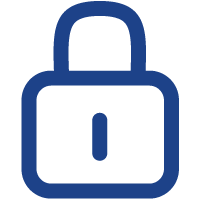HELOC Scams Are on the Rise
Security
Oct 01, 2025

What’s happening
Criminals are getting access to borrowers’ Home Equity Line of Credit (HELOC) accounts. They usually obtain an account holder’s online banking login credentials and then go right in and steal money.
How the scam works
There are several variations of this scam. A scammer’s ultimate goal is usually to take over a person’s account. Once inside, they can move money, open accounts, or write fraudulent checks. Here’s how they might do it:
- Phishing and malware. Fraud may start with a fake email or link, often asking you to “verify” a transaction that you never initiated. When you respond, the scammer tricks you into revealing your credentials and then uses this information to reset your password and/or change the contact information on the account. Now, they can log in and take control, and any fraud alerts are sent to their own email or phone — not yours.
- Public record searches. Mortgage filings, including HELOCS, sometimes include personal details like name, address, lender information, and even signatures. Scammers can look this up and use the information to trick you into sharing more information or to impersonate you with your lender.
How to protect yourself
- Know whom you’re talking to. If you’re unsure whether the person you’re communicating with is truly from your credit union, hang up and call using a known number. (For Harborstone, that’s 1-800-523-3641).
- Help us keep you safe. At Harborstone, when a member calls us, we verify their identity with several pieces of key identifying information. You can also add an additional layer of protection by setting up a special code word with us. (To do this, stop by your local branch, and a team member will add the code word to your account.)
- Keep your information private. Check your loan documents to make sure they don’t show your full account number. If they do, store them securely.
- Monitor your account. Look at your HELOC statements and transactions regularly. These accounts are easy to forget, but checking often helps you catch fraud early.
- Act fast if something looks wrong. Strange charges? Accounts you didn’t open? Report anything suspicious to your lender right away. Quick action can stop losses.
Did you get scammed?
- File a fraud report with the Federal Trade Commission, which will give you information on the next steps you can take.
- File a police report, especially if you suspect you’re the victim of identity theft.
- Run an antivirus scan on your devices.
- Change the password on your account (and your other financial accounts too).









